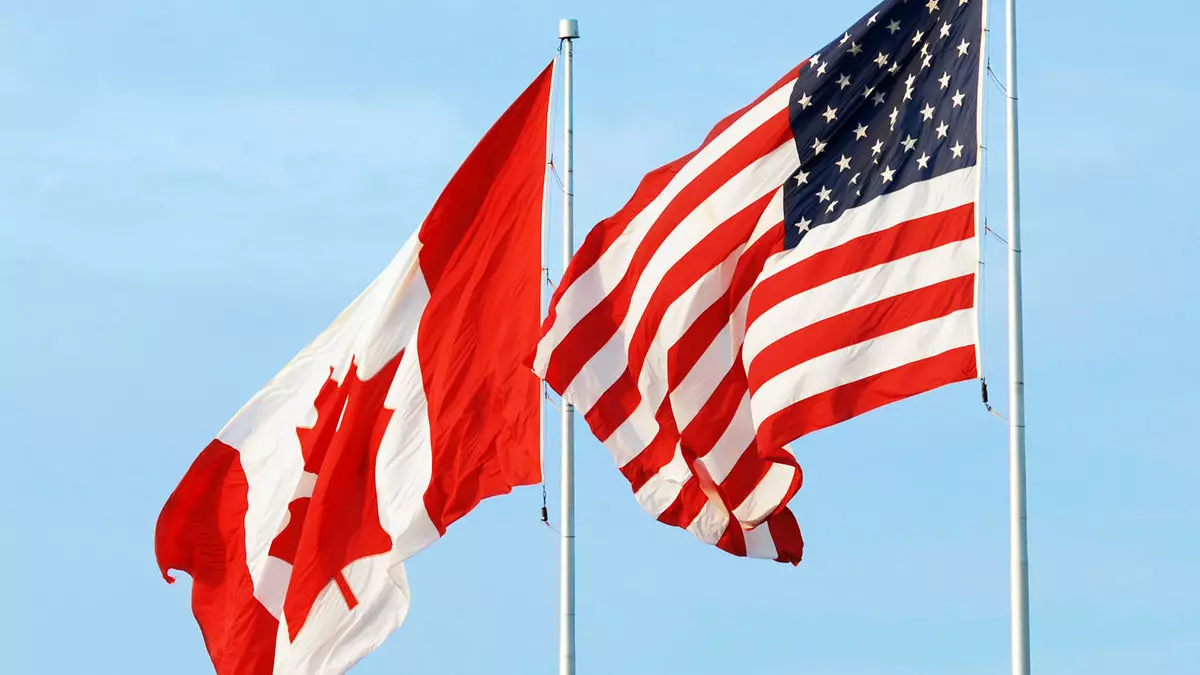The travel corridor between Canada and the U.S. has witnessed an unprecedented downturn, marked by a staggering 70% fall in advanced bookings for the summer season. This alarming trend, detailed in recent analyses by aviation data specialists at OAG, reflects a significant shift in travel dynamics that cannot be ignored. According to OAG’s senior analyst, John Grant, the collapse in future flight bookings suggests that Canadians are less inclined to cross the border as they once did. This downturn appears unsurprising given the broader socio-political context, which is characterized by deteriorating relations between the two nations.
The numbers are hard-hitting: fewer than 300,000 advanced bookings were recorded for April, representing a dramatic decline of over 75% compared to the previous year. Notably, for the months leading up to September, data indicates consistent drops ranging from 71.4% to 72.2%. Such figures not only reflect a challenge for airlines but also signal a notable shift in consumer sentiment. The impacts of these declines extend beyond just airlines and beg an examination of the underlying reasons.
Political Tensions and Economic Impact
The collapsing travel market cannot be viewed independently of the political climate. Recent tensions, fueled by rhetoric from the American administration, have created an unfavorable atmosphere for Canadians wishing to travel south. With President Trump’s controversial remarks about Canada potentially becoming the “51st state,” coupled with a trade war that has left many feeling uneasy, it is no wonder that Canadians are hesitant to reach for their passports.
This sentiment goes beyond politics; it intertwines with economic realities as well. The depreciation of the Canadian dollar against the U.S. dollar further compounds travel concerns. The exchange rate has become harsh; as of March 26, 100 Canadian dollars translated to just 70 U.S. dollars. This stark difference has led travel companies such as Oceania Cruises to offer promotions attractive enough to entice Canadians to book cruises using their local currency without worrying about exchange rates. While this initiative may seem like an enticing option, it underscores the broader difficulty of travel arrangements across the border.
Airlines Struggle to Adapt
Despite the sharp decline in demand, airlines have responded only with minor schedule adjustments. Between March and late March, more than 320,000 one-way seats were eliminated from the U.S.-Canada route map. While this might appear significant, it reflects only a 2.6% reduction and suggests that airlines are treading carefully—unsure of where to divert their capacity amidst diminished demand. Major carriers like Air Canada, United, and WestJet have already made notable route suspensions in response to the shifting landscape.
Grant points out an essential dilemma for these airlines: it is challenging to restructure routes when a sufficient gap has already formed in booking sales. Airlines are also scrutinizing potential alternatives for their aircraft, as shifting capacity that has already been committed elsewhere comes with restrictions. This tension indicates a marketplace in upheaval, where conventional travel patterns are disrupted by political circumstances and economic factors.
Shifting Focus to Europe
In a strategy that reflects adaptability in the face of adversity, airlines like WestJet are diverting their focus towards European destinations, planning to add more flights to this region despite the chaos at home. By pivoting to Europe, where demands may be more stable, they hope to mitigate the effects of the steep plunge in U.S.-Canada bookings. This shift not only highlights the resilience of the airline industry but also indicates a broader trend wherein travelers may seek alternatives that offer more favorable conditions and experiences.
As uncertainty looms over the summer travel season, one cannot dismiss the potential long-term ramifications of this lack of movement in travel between Canada and the U.S. Shifting dynamics, fueled by both political and economic factors, are reshaping not only consumer behavior but the very fabric of cross-border aviation. The desire to travel remains deeply rooted, but the obstacles in the way have created a ripe moment for reflection among consumers and providers alike. The aviation industry now finds itself at a critical juncture—one that will demand innovative strategies and adaptability in order to recover from this ongoing crisis.

